15 RESTAURANT MARKETING TIPS FOR THE BUSY RESTAURANT MANAGER
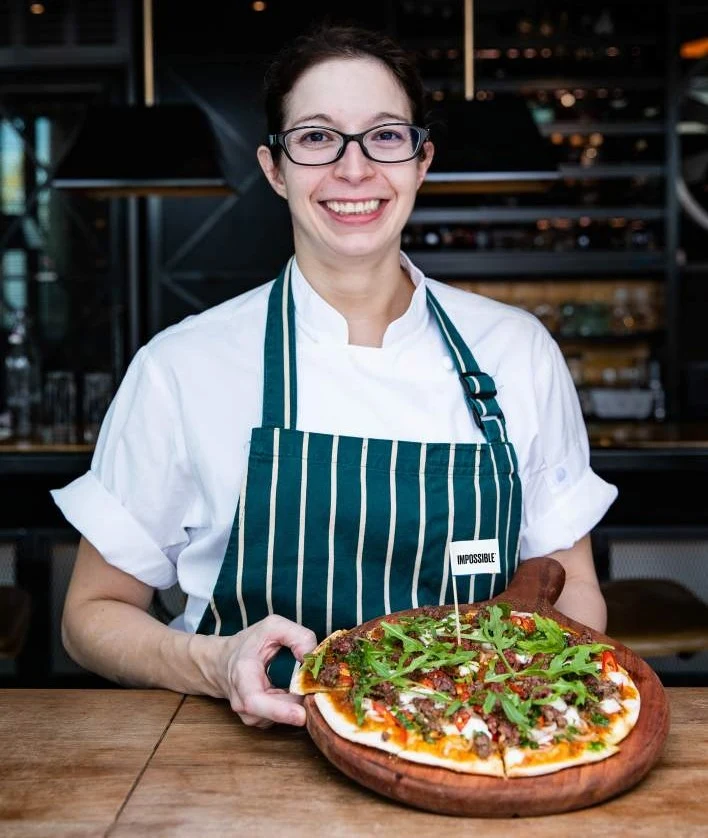
You are busy and you have at least 37 things on your to do list right now. If you’re reading this article, then there’s a chance that “make a marketing plan” is one of those items. In these next 10 minutes, we hope to give you a sense of the specific restaurant marketing tasks that are worth doing so you can thrive and stay busy.
Set your expectations now: you won’t be able to accomplish this all in one day. This stuff takes time and knowing what the steps are is a solid first step. With a bit of patience, trust that you will check off “do marketing” from your list.
We wrote this list as a general overview of how to do restaurant marketing—from the obvious to the nuanced—with links to deeper dive articles on more specific aspects of marketing. Here we go.
1. SET ASIDE TIME TO WORK ON RESTAURANT MARKETING EVERY WEEK
Ok, we know this is quite obvious, but hear us out. Blocking out time to work on restaurant marketing every week on your calendar as a repeating task makes it more likely you’ll get it done. Maybe it’s twice a week, Tuesdays and Thursdays in the morning for 2 hours. Maybe it's just you alone in the office or you sit with a staff member or a buddy.
“Do marketing plan” is often the thing you put off in favor of knocking out easier, more straightforward tasks. So it ends up occupying more space in your brain than necessary. This is a recipe for resentment. That's why it's a great idea to actually make marketing time an event on your calendar as a recurring thing you just do.
2. RESEARCH YOUR CUSTOMERS TO UNDERSTAND WHO YOU ARE SELLING TO
Think of this as market research. Chances are you may have done a bit of this when you decided to open a restaurant—thinking through which niche your offering would serve. It's important to do this again when designing your marketing approach.
How old are your customers? Where do they spend time, in real life and on the internet? Where can you take out an advertisement that might reach them? Who do they follow online? What local stores do they shop in where you could post a flyer?
Once you have this information, design your marketing to fit that audience. Age range data is extremely useful here. You’ll use it for targeting Facebook and Instagram advertisements, for selecting events to attend, word-choice to use in promotion, even menu items.
3. HAVE A PRESENCE ON THE INTERNET
Here’s another obvious one that deserves some discussion nevertheless. In order to be discovered these days, it’s critical to have a presence on the Internet that is more than a web page with your hours, locations, menu, photos of your dining room, and most importantly, pictures of your food!
Think about your Internet presence like an interconnected web—you want it all to link up. Your website links to your Google business page which links to your Instagram which links to your Uber Eats delivery page and so on. It's important to give customers many avenues to find you and not rely entirely on a single point.
Customers are most likely to find you on these sites so it’s important to have a presence there:
Your own website
Search engines like Google and Yelp
Social media channels like Instagram and Facebook
Delivery platforms like Caviar, Doordash, GrubHub, UberEats
Reservation platforms like OpenTable and Resy
4. TAKE 10 MINUTES TO SET UP A STUNNING LISTING ON GOOGLE MY BUSINESS.
If you do one thing in establishing your Internet presence, it’d be this: Make your Google My Business page beautiful and complete. The components of this page include the straightforward information of your hours, location, phone number, website, and menu. And then there’s the photos. Take care to upload the most shining photos of your offering because Google shows the owner's uploaded image as the main thumbnail. The rest of the images come from customer.
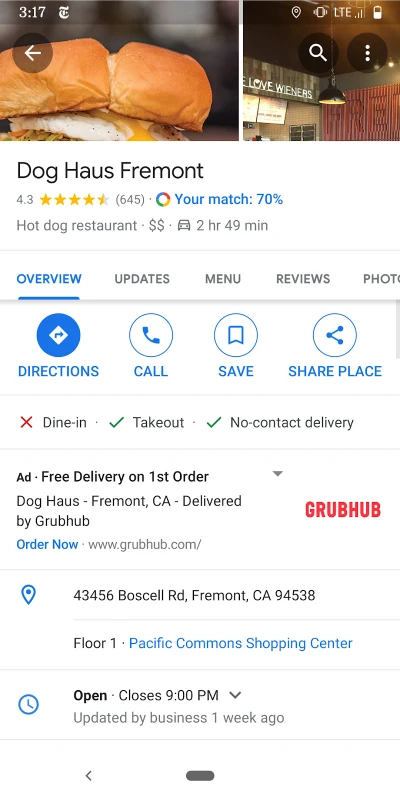
This article(opens in a new tab) from Toast goes deeper into the why behind using Google My Business. Short summary: it’s all about local search.
5. MAKE POSTING TO SOCIAL MEDIA A DAILY GOAL AND REVIEWING THE FEED A WEEKLY EVENT.
Similar to putting time on your calendar to do a marketing plan, make posting a daily goal and reviewing the feed a weekly event on your calendar.
Take the pressure off yourself from having a strategic social media plan. The only plan you need is to publish content and reply to comments on your posts. It’s wonderful to simply snap a picture of the amazing dishes coming out of the kitchen and posting it to your Instagram with a caption that says what it is. Spontaneous, fun, in the real moment social media is exciting to see. Remembering to take that moment to hit publish is the key.
If you have a social media person, we recommend they use a social media scheduling tool like Buffer or Hootsuite so they can prepare batches of updates to fill in the spontaneous content.
6. DEVELOP YOUR IDENTITY/VALUES/ETHOS AND ADD THEM TO YOUR MARKETING
What makes your restaurant memorable besides the food? The clearer you are about articulating the kind of restaurant you are—and showing it in how you present yourself—the more distinguished and differentiated you become. Most businesses these days can compete on price but it's harder to compete on how you make people feel.
Asking your customers some of these questions could help you to articulate your identity:
What makes you choose to dine here?
How do you feel when you eat here?
What do you remember most about the experience of eating here?
Here’s an example of FatBurger(opens in a new tab) bringing their community work to their instagram feed.
The answers to these questions and thoughts from you and your team form the base of your ethos. You see a restaurant’s identity shine in myriad ways. Here are some examples:
Your tone in social content
The type of community work you participate in and how you showcase it
Events you participate in/sponsor/donate to
How the staff is trained
How the menu is created (for example whether you serve sustainable products, seasonal ingredients, or support local farms)
The design of your marketing materials
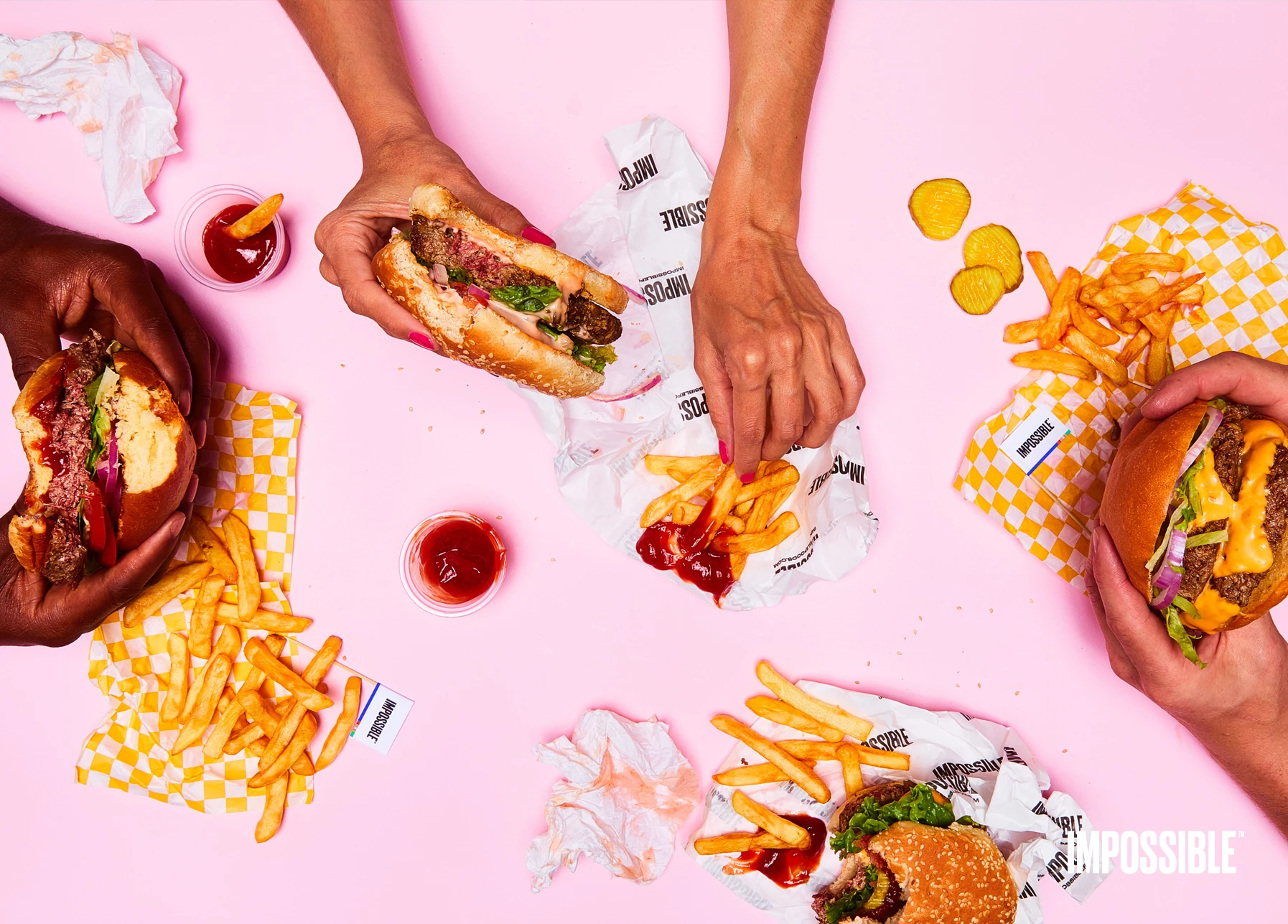
7. ANALYZE AND REFRESH YOUR MENU FREQUENTLY
Your menu is one of your biggest pieces of marketing. Do you have what the people want to eat? There's a balance of course of following what the chef wants to cook and what the people want to eat. Keep a close eye on your menu: what's selling and what's not? Swap things out. Pay attention to trends like the data from GrubHub’s State of the Plate report(opens in a new tab).
One key takeaway from the report is the rise in popularity of plant-based burgers—up 291% from last year. Consider adding Impossible(opens in a new tab)™ products, delicious meat made from plants, to your menu.
8. ADD IMPOSSIBLE PRODUCTS TO YOUR MENU
Impossible products are a proven business driver and incredible marketing tool. We’ve seen restaurants that start offering Impossible products attract a whole new set of clientele that had never before visited the restaurant. Data from a 2019 Impossible Foods study shows that 55% of people said they’d visit a restaurant just to order Impossible Burger(opens in a new tab).
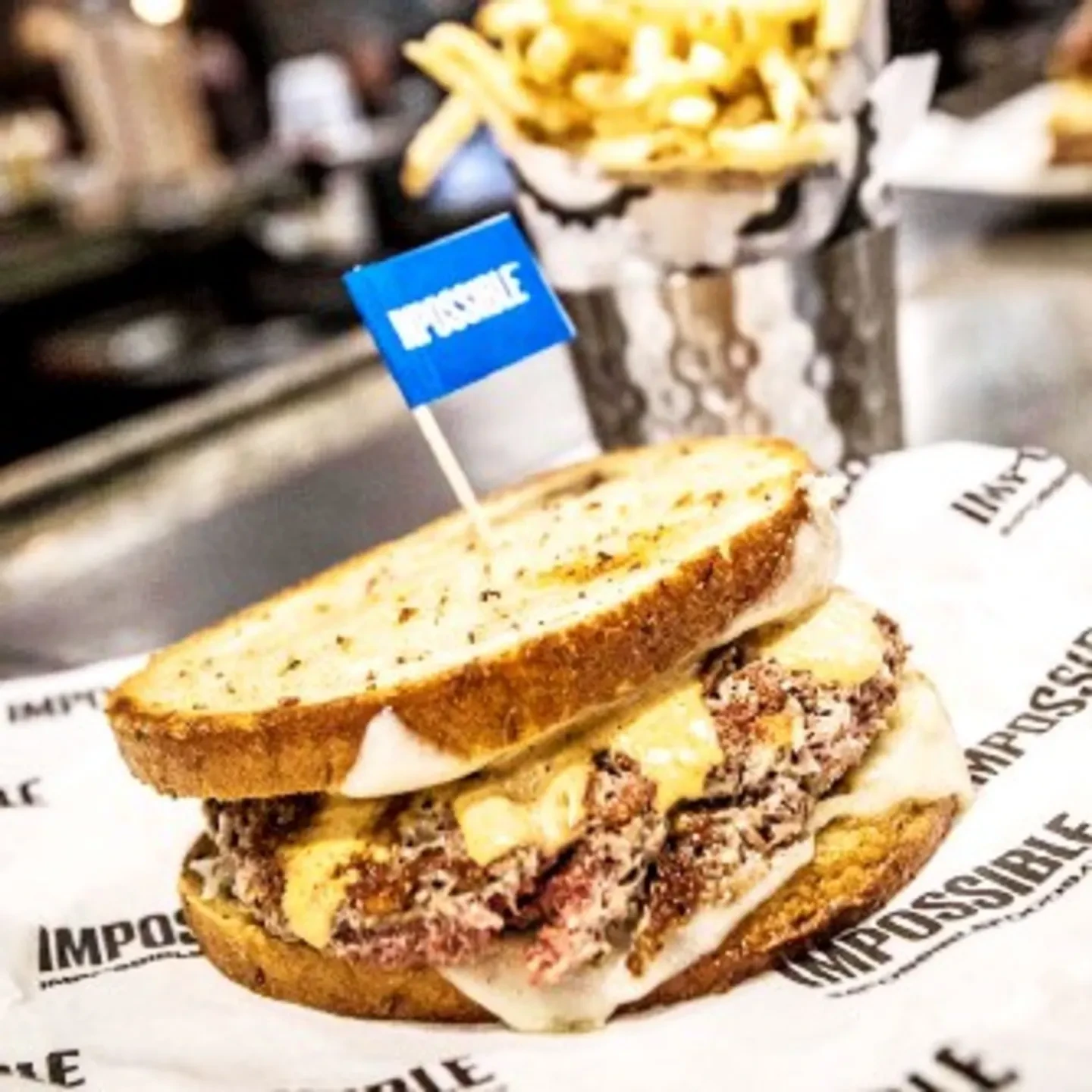
9. MAKE MARKETING PART OF FRONT OF HOUSE EMPLOYEE TRAINING
Marketing need not fall on the shoulders of one person. In fact, it's critical that it’s shared. Your staff is your biggest marketing tool by being exceptionally trained to ensure every guest is well taken care of from the moment they enter until they leave. A host welcoming you right when you walk in the door with a warm greeting and keeping you updated on the status of when your table will be ready is more marketing than anything else and is a TRAINED skill.
Check out our Front of House Training guides(opens in a new tab) for more tips on how to encourage employees to promote new dishes, events and holiday happenings with customers.
10. GET THESE TOOLS TO MAKE MARKETING AND DESIGN EASIER
A ring light for food photography. Lighting food for those mouth-watering shots is hard. Get yourself a ring light (like this one(opens in a new tab)) to brighten up the photos you’re posting on Instagram. (Check out this article(opens in a new tab) for more advanced food photography tips)
Canva(opens in a new tab) for any and all graphic design needs. They offer a plethora of pre-designed templates for everything from posters, to menus, Facebook cover images, to social media posts.
Buffer(opens in a new tab) for social media scheduling to Facebook, Instagram
TweetDeck(opens in a new tab) for managing multiple Twitter feeds or following hashtags
GiphyCapture(opens in a new tab) is an app you can download from the Apple App store to make animated gifs.
11. TAKE AUDIENCES BEHIND-THE-SCENES BY GOING LIVE ON INSTAGRAM
You’re the expert. Connect with your customers by showing them how the magic happens behind the scenes, and highlighting the BOH employees that are working hard to facilitate takeout orders. Follow us on Instagram(opens in a new tab) and Facebook(opens in a new tab) to catch our weekly live cooking shows! And check out (opens in a new tab) for more inspiration on hosting Live.
12. FEATURE YOUR CUSTOMERS ON SOCIAL MEDIA
Are your customers posting about their experience in the restaurant or from takeout and delivery orders? This is called user generated content (UGC) and it’s fantastic fodder for you to publish to social media. Build community, followers, and business by reposting some of what they share on your own channels.
13. HOST A SOCIAL MEDIA CONTEST
Build community and encourage more orders by offering prizes or meals to customers who tag you in their posts or stories. Great example here from Fatburger(opens in a new tab).
14. SHARE RECIPES FOR FAVORITE MENU ITEMS
It helps build brand love by sharing the recipe of a favorite customer dish to get people thinking about your restaurant even at home! That will keep your customers thinking of you.
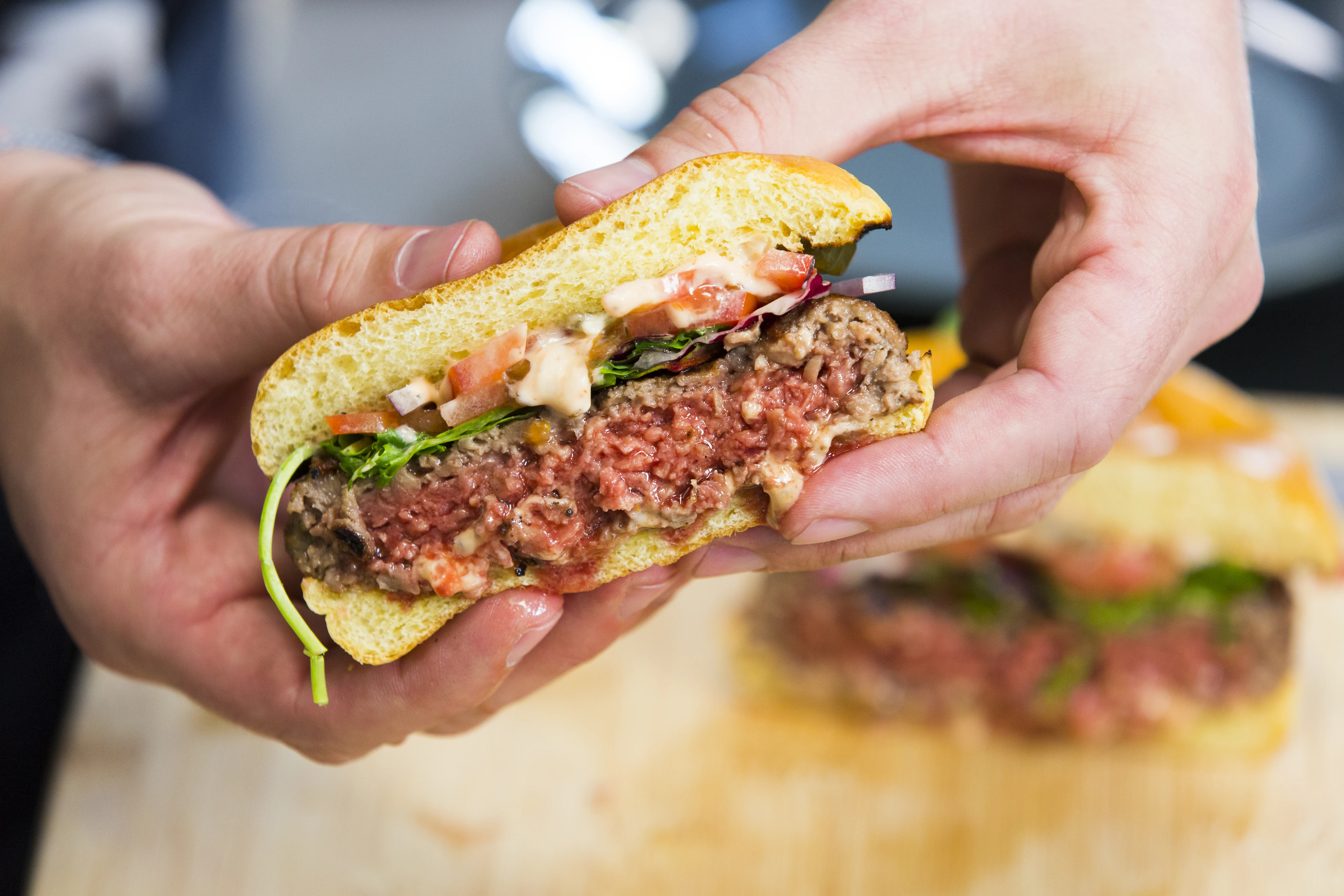
15. SET ASIDE A BUDGET FOR RESTAURANT MARKETING EVERY MONTH
The same goes for money. Set aside an amount each month that you plan to spend on marketing. Even if you don't use it all, knowing that you have invested in your promotion is a necessary part of getting it done. If you already decided to spend $1,000 this month on marketing, then pulling the trigger on $400 of ad spend is less intimidating. Check out this article(opens in a new tab) to learn more.
Conclusion
from our friends at Toast for tips on Facebook marketing for restaurants. We hope that these ideas give you the spark of enthusiasm you need to tap into your restaurant marketing flow state. Remember to be patient and trust that all the little pieces you have in motion today are building into a groundswell of marketing success. Now go publish that awesome video clip you got of your chef preparing this week’s top selling dish!